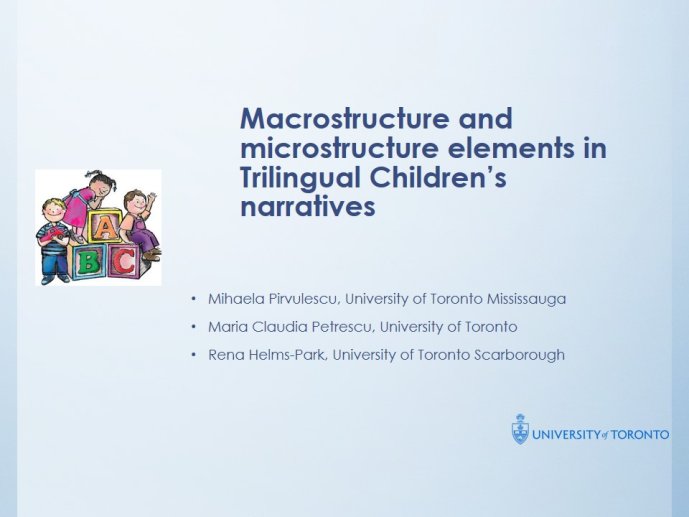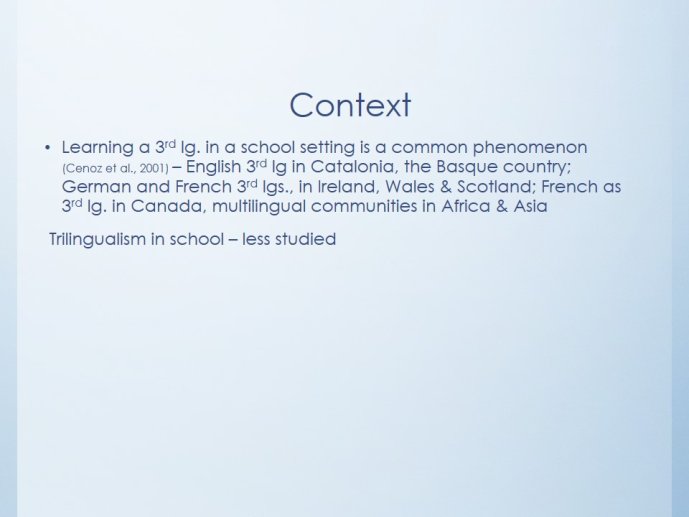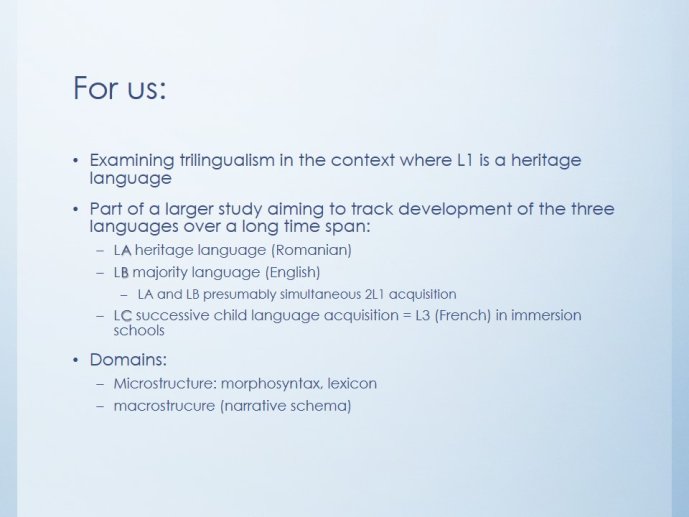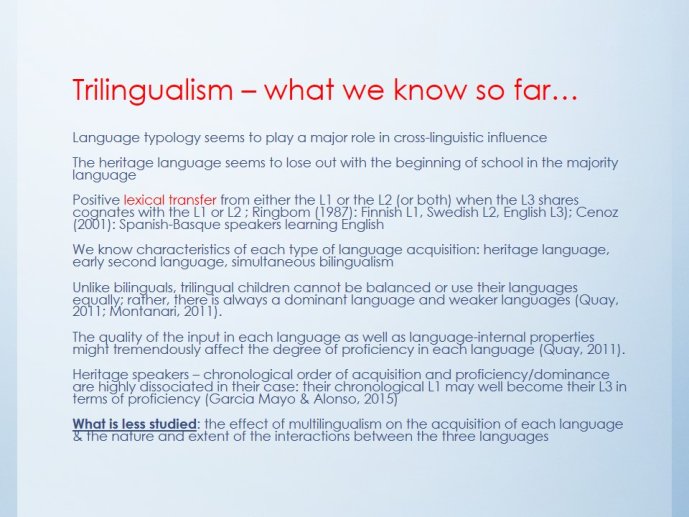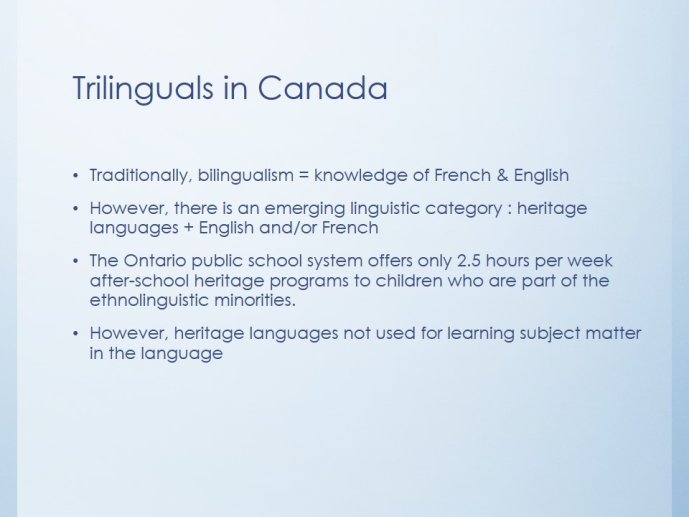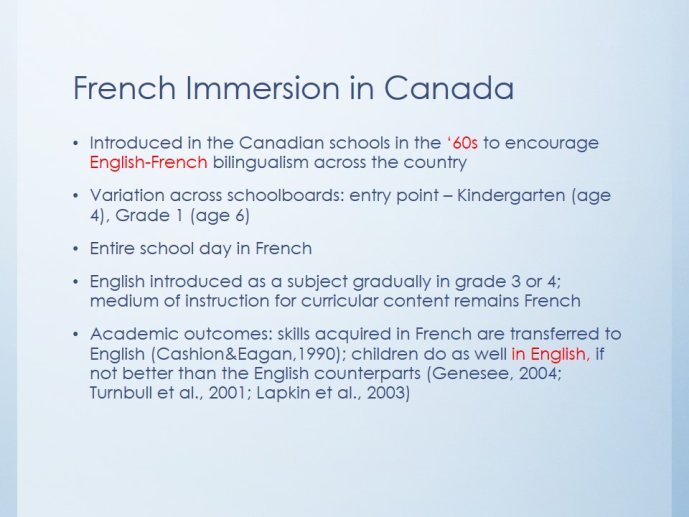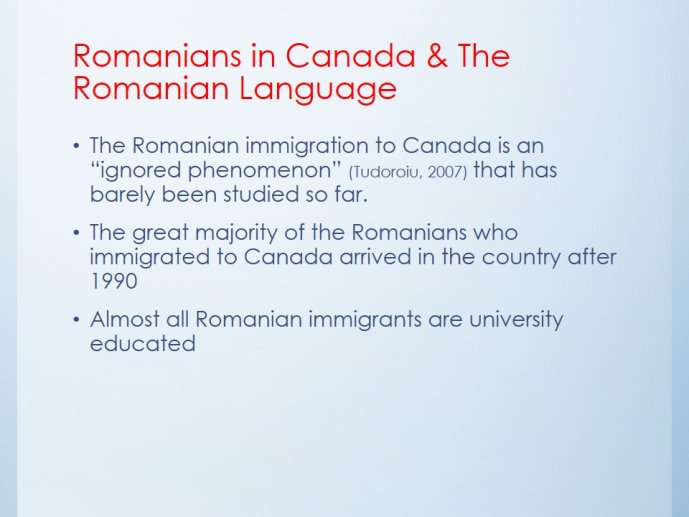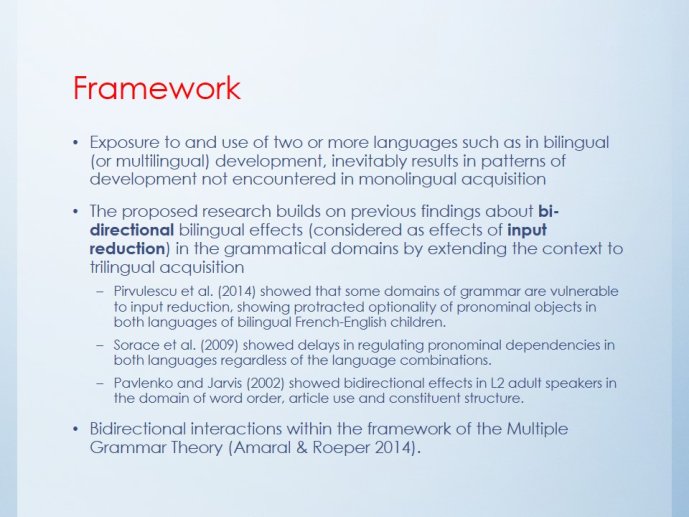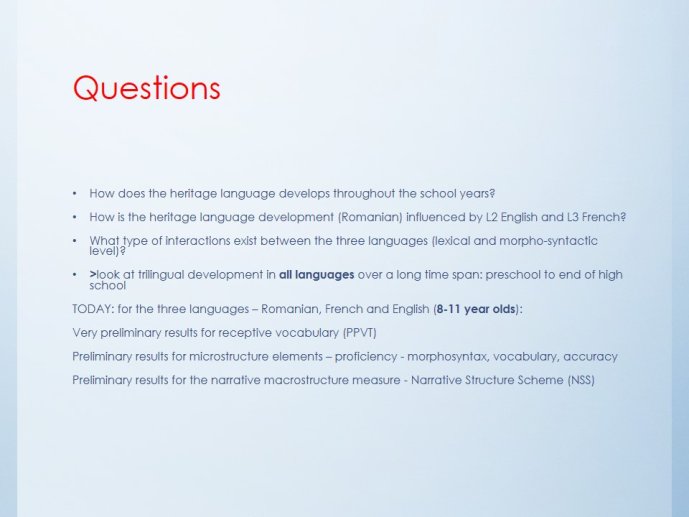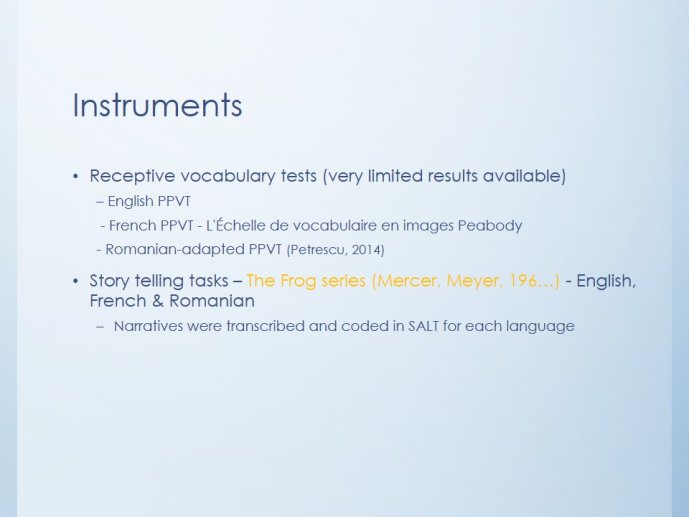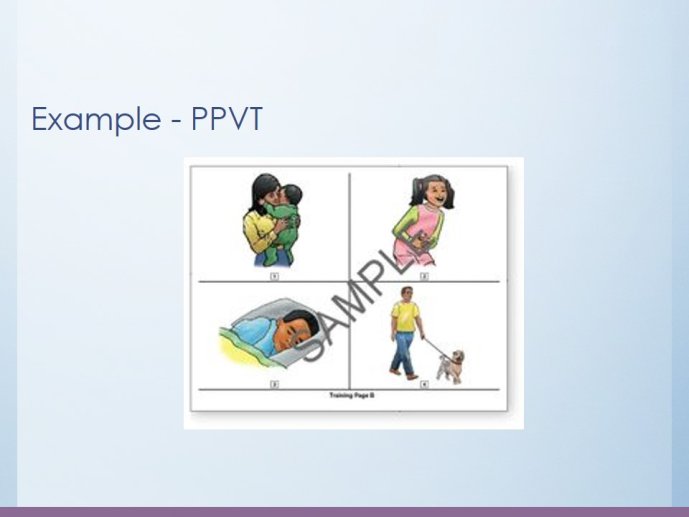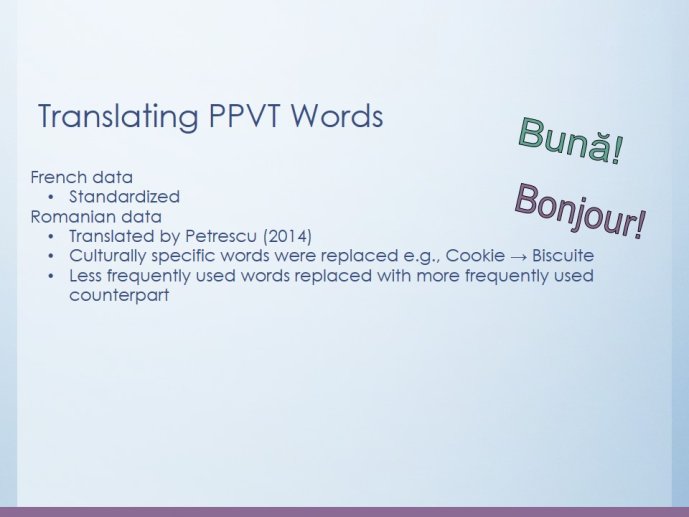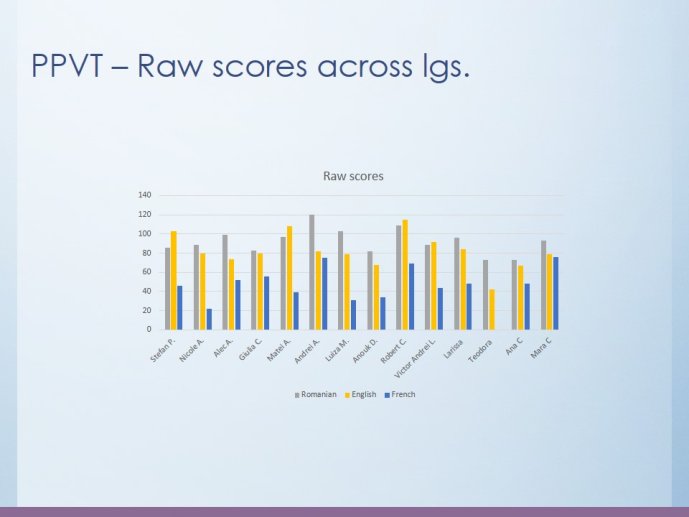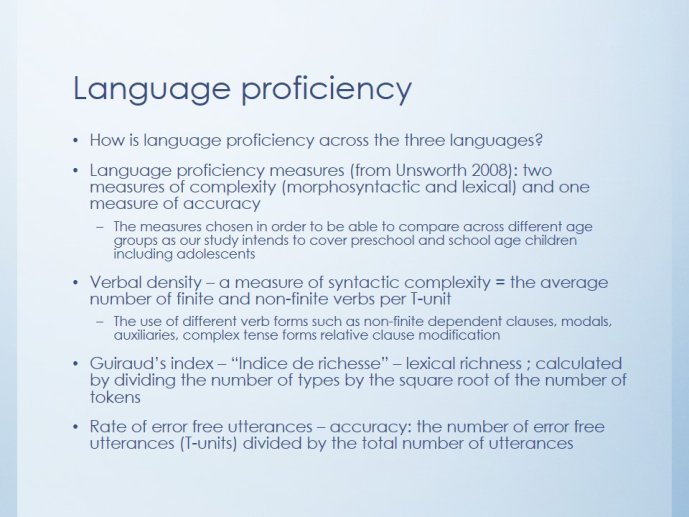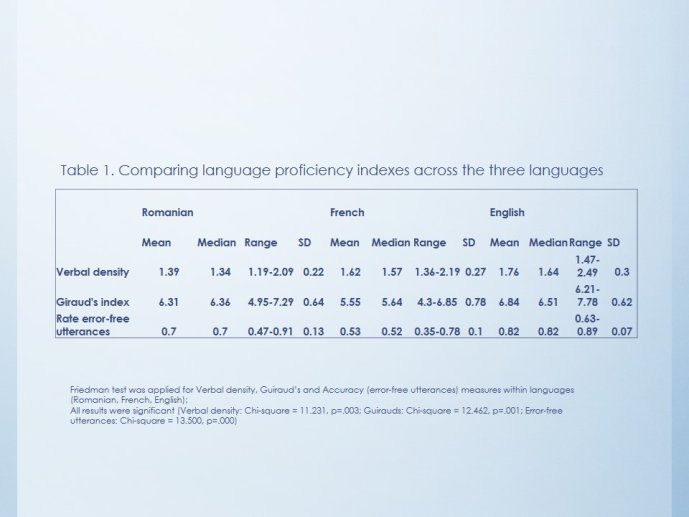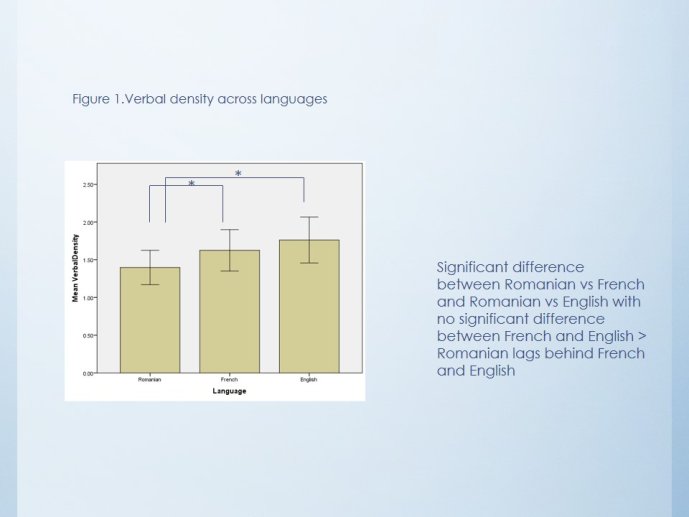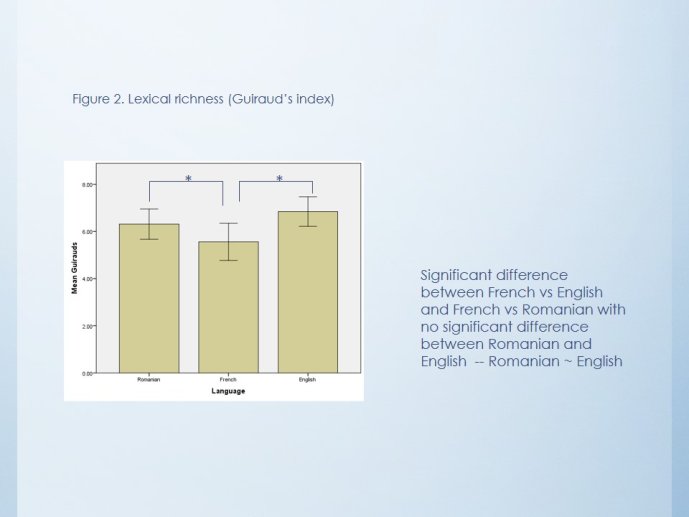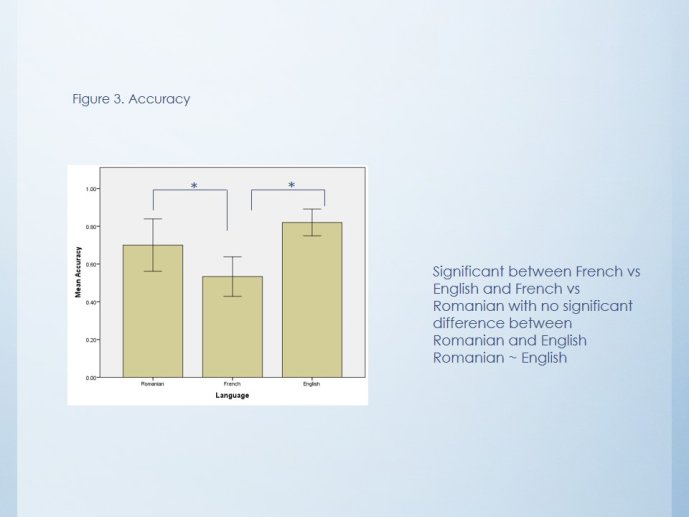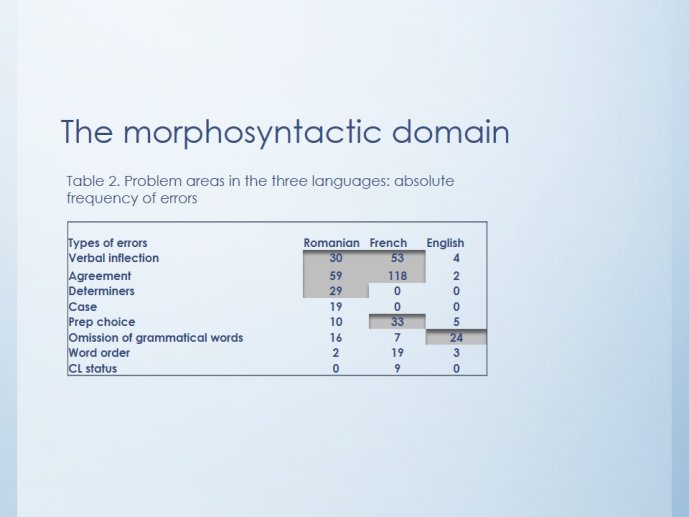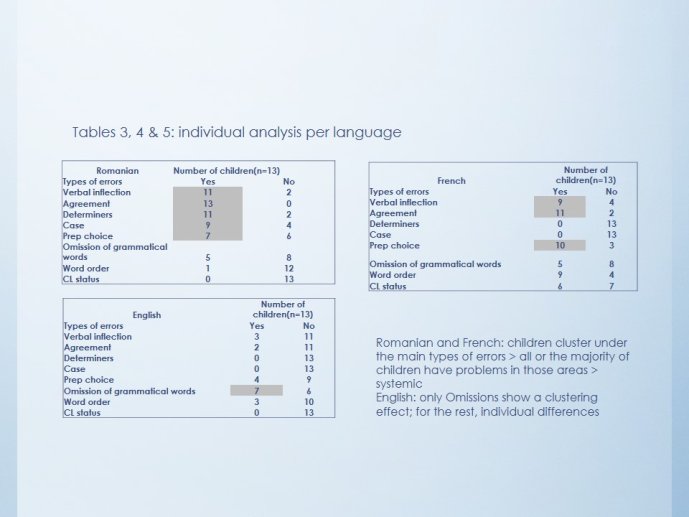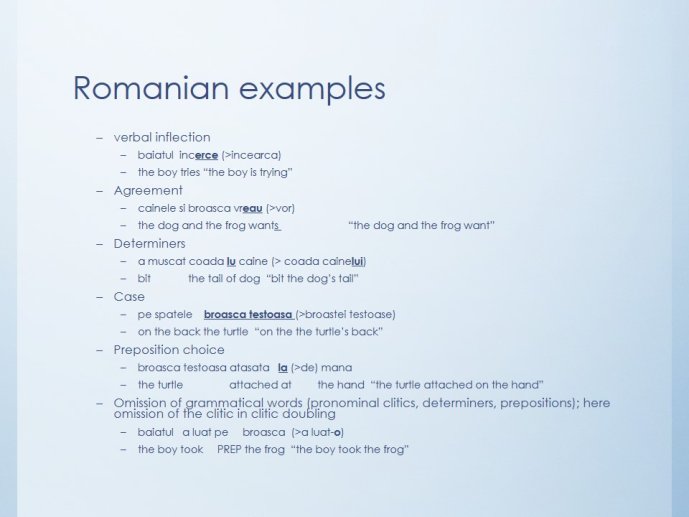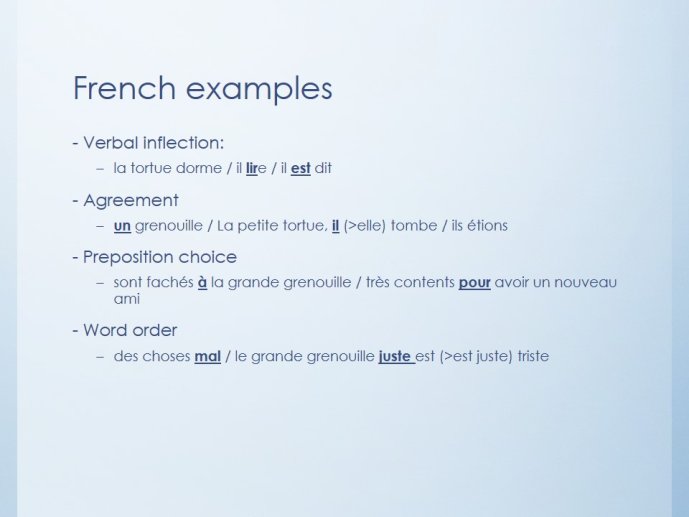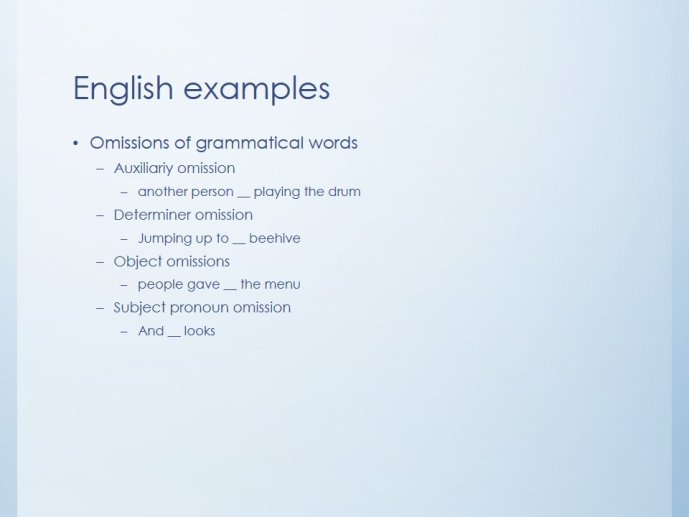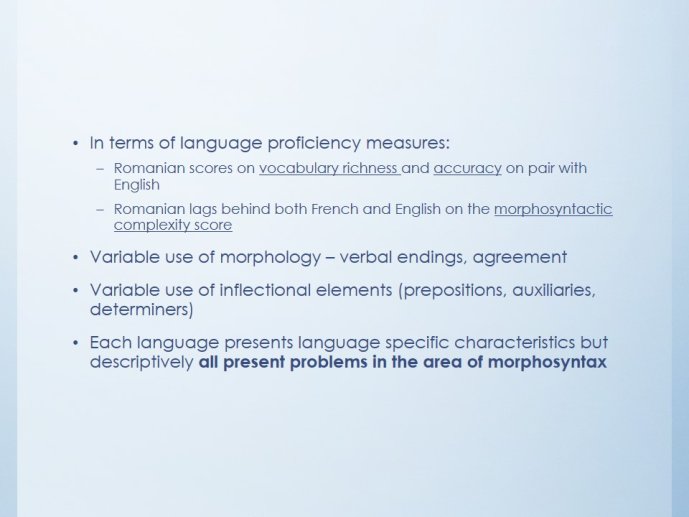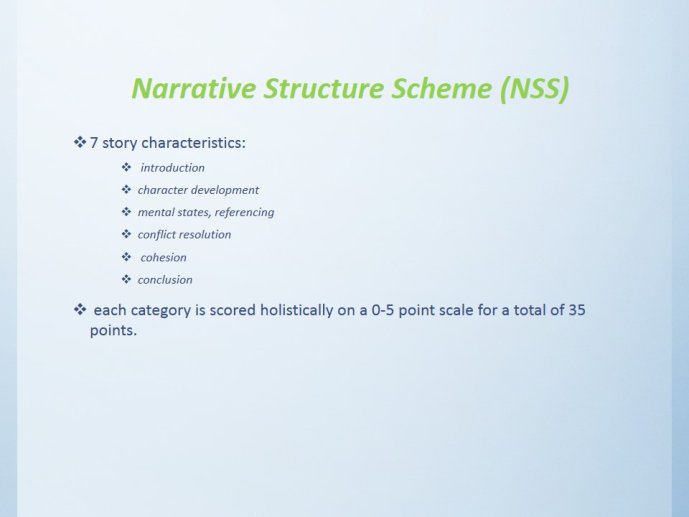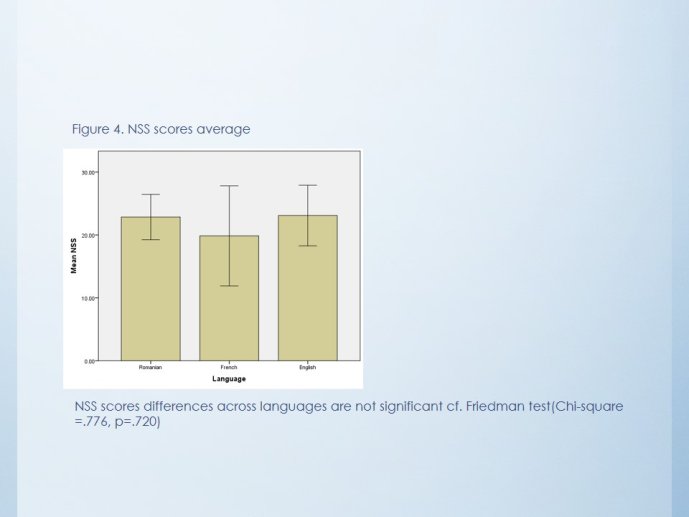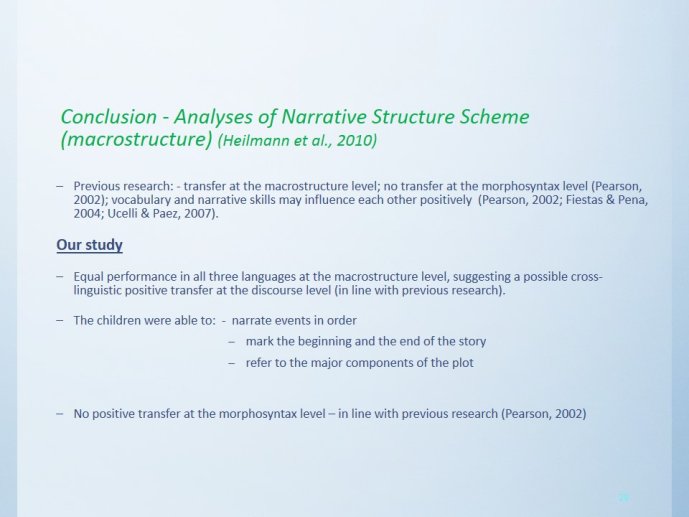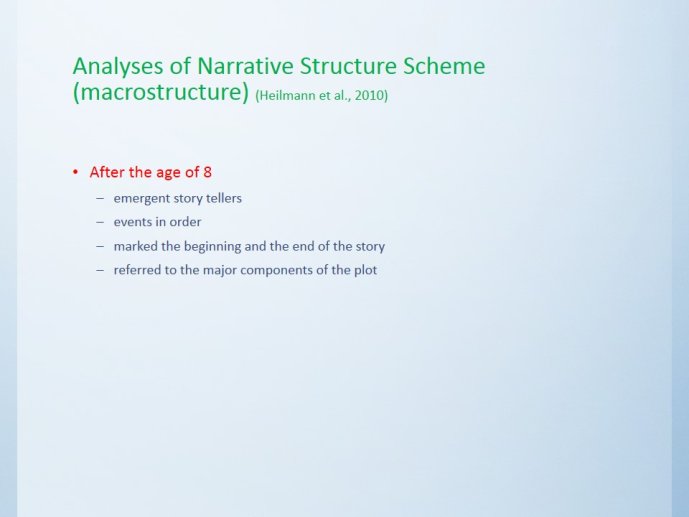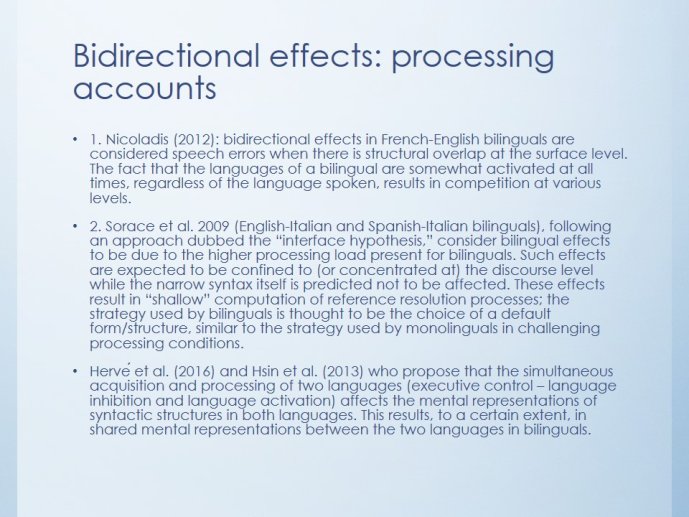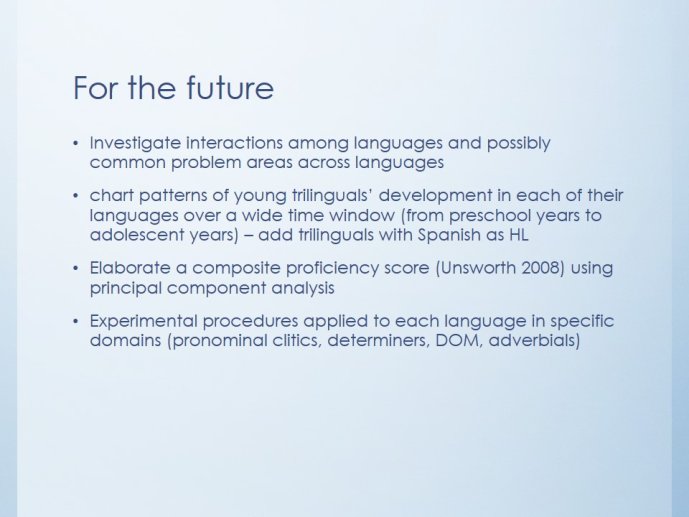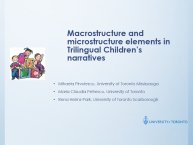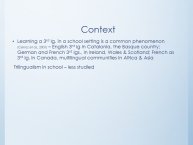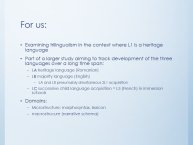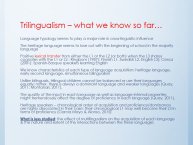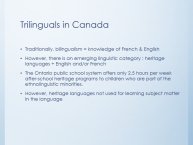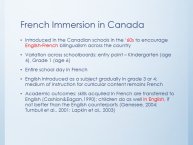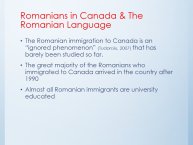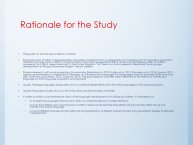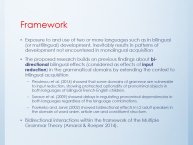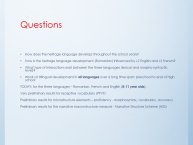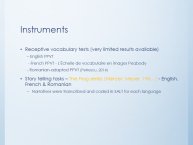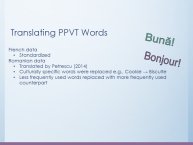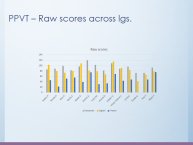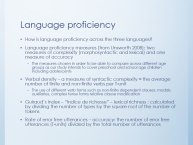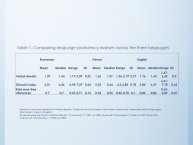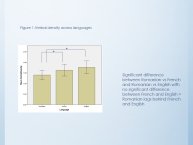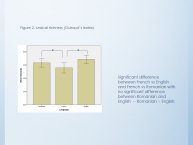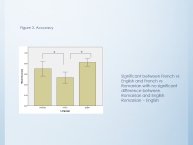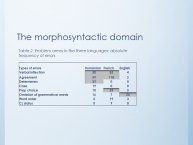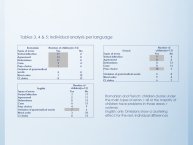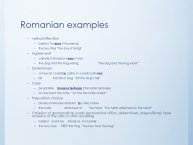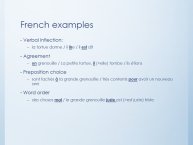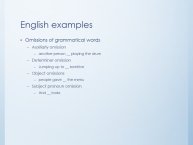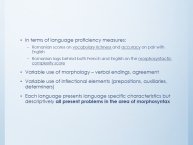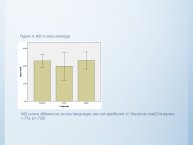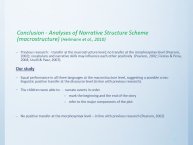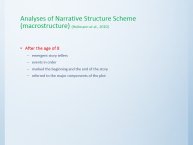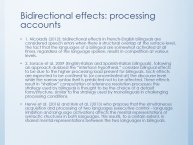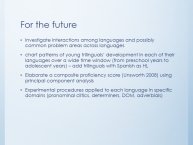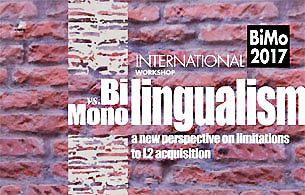Notice
Trilingual effects at the microstructure and macrostructure levels in children’s narratives / Mihaela Pirvulescu
- document 1 document 2 document 3
- niveau 1 niveau 2 niveau 3
Descriptif
Trilingual effects at the microstructure and macrostructure levels in children’s narratives / Mihaela Pirvulescu, in colloque "Bilingualism vs. monolingualism: a new perspective on limitations to L2 acquisition" organisé par le laboratoire Octogone-Lordat (Université Toulouse 2) sous la responsabilité de Barbara Köpke (UT2J), Holger Hopp (Technische Universität Braunschweig), Tanja Kupisch (Universität Konstanz), Université Toulouse Jean Jaurès, 19-20 juin 2017.
Ourstudy examines the narrative productions of trilingual children in Romanian,English and French. The childrengrew up speakingtheir heritage (minority) language at home,English as their main language of the society, andFrench through the immersion system, starting at age 6.
Theeffects of learning two or three languages have been probed at the levels ofthe lexicon and grammar, especially with bilingual children, or with adultswhose third-language acquisition is influenced by their first or secondlanguages (Cummins, 2005; Montrul, 2013; Rothman, 2015). While recent studies have mainly looked at patternsand directionality of transfer, our contributionuncovers patterns of development in each of the three languages taking theperspective of mutual interaction among the three languages. We show that trilingual acquisition leads to effectsin each of the languageacquired, the main consequence being the introduction of optionality in diversegrammatical domains.
Datawere elicited through the Frog series (Mayer, 1969) in each language. 72narratives were elicited form 13 children (8 to 11 year-olds). Children arecomparable with each other in terms of amount of exposure to each of theirthree languages.
Weanalyzed macrostructure and microstructure elements. For microstructure we measuredmorphosyntactic complexity (verbaldensity), lexical richness(Guiraud’s index) and accuracy (rate oferror-free utterances). We ran a quantitative/qualitative analysisof the inflectional morphology.For macrostructure we used the narrative structure scheme (NSS, Heilmann etal., 2010).
Resultsfor the NSS point to the transferability of ‘story grammar’; scores were notsignificantly different between languages (Figure 1). These findings raise thepossibility that telling stories benefits from school-based education and thatthe macrostructures of storytelling are transferable across languages (Paradis,2014, Pearson, 2002). Results for microstructure elements show an advantage forthe majority language (English). In addition, Romanian (heritage language)scores on vocabulary richnessand accuracy on pair with English whileit significantly lags behind French and English on the morphosyntacticscore (Table 1). However, problematic areas in inflectional morphology exist inall three languages. The heritage language has been characterized as prone toomission and substitution errors, as well as overall simplification; we foundthe same in some domains in all the languages of a trilingual child. The areasaffected in the three languages are omission and inconsistent marking ofdefiniteness and definiteness agreement, subject-verb agreement morphology andomission/selection of prepositions. We explore possible explanations at thelevel of processing or mental representation.
Intervention / Responsable scientifique
Thème
Documentation
Références bibliographiques
Caloi, Irene (2017). Additive focus particles in German-speaking learners of Italian as L2. In De Cesare, A. M., Andorno, C. M., Focus on additivity. Multiperspective and multifaceted views, Amsterdam, John Benjamins Publishing Company, 237-263.
Hernandez, Arturo E. (2009). Language switching in the bilingual brain: What's next?, Brain & Language, 109, 133-140.
Hofweber, Julia (2016). Effects of dense code-switching on executive control, in Irina A. Sekerina and Lauren Spradlin, "Bilingualism and Executive Function: An interdisciplinary approach", Linguistic Approaches to Bilingualism, 5, vol.6, 648–668.
Hopp, Holger & Schmid, Monika S. (2014). L'accent étranger perçu dans l'attrition L1 et l'acquisition de L2: l'impact de l'âge d'acquisition et du bilinguisme / Perceived foreign accent in L1 attrition and L2 acquisition, Psycholinguistique appliquée, 34 (2), 361-394. [En ligne : http://www.let.rug.nl/languageattrition/Papers/Hopp%20&%20Schmid%20forthc.pdf].
Kartushina, N., Frauenfelder, U. H. and Golestani, N. (2016), How and When Does the Second Language Influence the Production of Native Speech Sounds: A Literature Review, Language Learning, 52, vol. 66, 155–186. [En ligne : http://onlinelibrary.wiley.com/doi/10.1111/lang.12187/full].
Köpke, Barbara, Schmid, Monika (2011). L’attrition de la première langue en tant que phénomène psycholinguistique, Langage, Interaction and Acquisition / Language, Interaction et Acquisition (LIA), Amsterdam, John Benjamins Publishing Company, numéro spécial 2, vol. 2, 185-196.
Kupisch, T. (2012). Thèmes génériques en italien des premiers bilingues germano. Bilinguisme: Langue et Cognition 15 (4), 736-756.
Massa, E., Cortelazzo, F., El Yagoubi, R. & Köpke, B. (2016). Bilinguisme et contrôle exécutif : exploration neurofonctionnelle au moyen des méthodes potentiels évoqués et IRMf, Revue de Neuropsychologie, 2, 8, 126-136. {En ligne : http://www.jle.com/fr/revues/nrp/e-docs/bilinguisme_et_controle_executif_exploration_neurofonctionnelle_au_moyen_des_methodes_potentiels_evoques_et_irmf_307476/article.phtml].
Meisel, J. (2001). The simultaneous acquisition of two first languages. Early differenciation and subsequent development of grammars, in J. Cenoz & F. Genesee (éds.), Trends in Bilingual Acquisition, Amsterdam, John Benjamins Publishing Company, 11-41.
Meisel, J. (1989). Early differentiation of languages in bilingual children, in K. Hyltenstam & L. Obler (eds.), Bilingualism Across the Lifespan : Aspects of Acquisition, Maturity, and Loss, Cambridge, Cambridge University Press, 13-40.
Paradis, M. (2007). L1 attrition features predicted by a neurolinguistic theory of bilingualism, in B. Köpke, M. S. Schmid, M. Keijzer & S. Dostert (éds.), Language Attrition. Theoretical perspectives, Amsterdam, John Benjamins Publishing Company, 121-133.
Pérez-Leroux, A. T., Pirvulescu, M., & Roberge, Y. (2011). Topicalization and object omission in child language. First Language, 3, 31, 280-299. [En ligne : http://journals.sagepub.com/doi/pdf/10.1177/0142723710394384].
Royle, Phaedra, St-Denis, Ariane, Mazzocca, Patrizia, Marquis, Alexandra (2017). Insensitivity to verb conjugation patterns in French children with SLI, Clinical Linguistics & Phonetics. [En ligne : https://eoa.umontreal.ca/wp-content/uploads/sites/32/2017/07/publicationsRoyleP_verbConjugationPatternsFrenchSLI.pdf].
Rvache, S., Royle, P., Gonnerman, L. M., Stanké, B., Marquis, A., Herbay, A. (2017). Development of a Tool to Screen Risk of Literacy Delays in French-Speaking Children: PHOPHLO, Canadian Journal of Speech-Language Pathology and Audiology (CJSLPA), 3, vol. 41, 321-340. [En ligne : http://www.cjslpa.ca/detail.php?ID=1220&lang=en].
Sabourin, L. (2014). The bilingual advantage in the Stroop task: simultaneous vs. early bilinguals, in "L3 Acquisition: A Focus on Cognitive Approaches", Bilingualism: Language and Cognition, 2, vol. 18, 350-355.
Schmid, M.S. & Köpke, B. (2017). The relevance of first language attrition to theories of bilingual development. Linguistic Approaches to Bilingualism, 6, vol. 7, 637 –667 [En ligne : http://www.let.rug.nl/languageattrition/Papers/Schmid&Kopke2017.pdf].
Schmid, M S., Köpke, B., De Bot, K. (2013). Language attrition as a complex, non-linear development, International Journal of Bilingualism, 17 (6), 675-682.
Stoehr, A., Benders, T., Van Hell, J., & Fikkert, P. (2017). Heritage language exposure impacts voice onset time of Dutch–German simultaneous bilingual preschoolers, Bilingualism: Language and Cognition, 1-20. [En ligne : doi: 10.1017/S1366728917000116].
Stöhr, A., Akpınar, D., Bianchi, G., & Kupisch, T. (2012). Gender marking in L2 learners and Italian-German bilinguals with German as the weaker language, in K. Braunmueller & C. Gabriel (eds.), Multilingual Individuals Multilingual Societies, 153–170.
Van Osch, B. A., Aalberse, S. P., Hulk, A. C. J., & Sleeman, A. P. (2017). Knowledge of mood in internal and external interface contexts in Spanish heritage speakers in the Netherlands, in K. Bellamy, M. Child, M. C. Parafita Couto, P. González, & A. Muntendam (eds.), Multidisciplinary Approaches to Bilingualism in the Hispanic and Lusophone World, Amsterdam, John Benjamins Publishing Company, 67-94.
Dans la même collection
-
On Qualitative Differences between Types of Language Acquisition / Jürgen Meisel
MeiselJürgen M.On Qualitative Differences between Types of Language Acquisition / Jürgen Meisel, in colloque "Bilingualism vs. monolingualism: a new perspective on limitations to L2 acquisition" organisé par le
-
Monolingual and multilingual learners of French. What are the effects of language background on spe…
BontempsMarieMonolingual and multilingual learners of French. What are the effects of language background on spelling? / Marie Bontemps
-
Attrition and (incomplete) acquisition of Italian answering strategies / Irene Caloi
Attrition and (incomplete) acquisition of Italian answering strategies / Irene Caloi, in colloque "Bilingualism vs. monolingualism: a new perspective on limitations to L2 acquisition" organisé par
-
Do temporarily induced code-switching modes alternate executive performance in late sequential bili…
Do temporarily induced code-switching modes alternate executive performance in late sequential bilinguals?
-
Processing variability in L2 learning: insights from articulatory training / Natalia Kartushina, Cl…
Processing variability in L2 learning: insights from articulatory training / Natalia Kartushina, Clara Martin
-
Age-related effects on language control and executive control: a behavioral-electrophysiological in…
MassaÉmilieAge-related effects on language control and executive control: a behavioral-electrophysiological investigation / Émilie Massa
-
Language, Development and the Bilingual Brain / Arturo E. Hernandez
HernandezArturo E.Language, Development and the Bilingual Brain / Arturo E. Hernandez, in colloque "Bilingualism vs. monolingualism: a new perspective on limitations to L2 acquisition" organisé par le laboratoire
-
Language Processing in Bilinguals: Distinguishing Early Sequential from Simultaneous / Laura Sabour…
SabourinLauraLanguage Processing in Bilinguals: Distinguishing Early Sequential from Simultaneous / Laura Sabourin, Santa Vinerte, in colloque "Bilingualism vs. monolingualism: a new perspective on limitations to
-
Implicit causality as a predictive cue in child L1 and adult L2 processing of German: Evidence from…
Implicit causality as a predictive cue in child L1 and adult L2 processing of German: Evidence from visual-world eyetracking / Judith Schlenter
-
Cross-linguistic influence at the feature-level ? Evidence from Dutch-German bilingual preschoolers…
Cross-linguistic influence at the feature-level ? Evidence from Dutch-German bilingual preschoolers. How bilinguals are more monolingual-like than assumed / Antje Stoehr
-
Subject position in heritage Spanish in the Netherlands and the US: a case for cross-linguistic inf…
Subject position in heritage Spanish in the Netherlands and the US: a case for cross-linguistic influence / Brechje van Osch, in colloque "Bilingualism vs. monolingualism: a new perspective on
-
Can French-English bilinguals process verb-particle constructions in a native-like manner? A self-p…
Can French-English bilinguals process verb-particle constructions in a native-like manner? A self-paced reading study / Alexandre Herbay, in colloque "Bilingualism vs. monolingualism: a new

